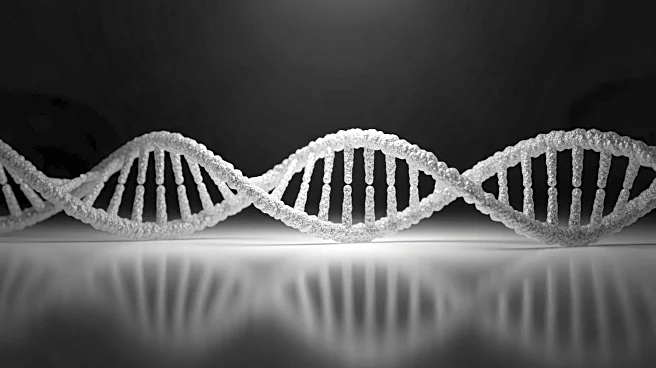What's Happening?
A study published in Nature Metabolism has revealed that maternal type 1 diabetes is linked to specific epigenetic changes in children, potentially offering protection against islet autoimmunity. Conducted by researchers from Helmholtz Munich, the study examined
DNA methylation patterns in children exposed to maternal type 1 diabetes. These patterns were found to affect the expression of genes involved in immune function, particularly in the HOXA gene cluster and the MHC region, which are known to influence type 1 diabetes susceptibility. The study involved analyzing blood samples from 1,752 children, comparing those with and without maternal type 1 diabetes. The findings suggest that early-life epigenetic programming may be a mechanism through which maternal diabetes confers a protective effect against the autoimmune disease.
Why It's Important?
The discovery of epigenetic modifications linked to maternal type 1 diabetes could have significant implications for understanding and potentially mitigating the risk of type 1 diabetes in children. By identifying specific DNA methylation patterns that confer protection, researchers may develop new strategies for preventing or managing the disease. This research highlights the importance of maternal health and environmental factors during pregnancy in shaping the long-term health outcomes of offspring. The study also opens avenues for further exploration into how similar epigenetic effects might occur in children born to mothers with gestational diabetes, potentially broadening the scope of protective interventions.
What's Next?
Future research will focus on identifying which type 1 diabetes susceptibility genes are epigenetically modulated by maternal diabetes. Researchers plan to investigate whether similar protective epigenetic effects occur in children born to mothers with gestational diabetes. Additionally, the collaboration with Helmholtz Munich will explore potential protein and metabolomic biomarkers linked to these DNA methylation patterns, aiming to understand how these molecular changes contribute to protection against islet autoimmunity.













